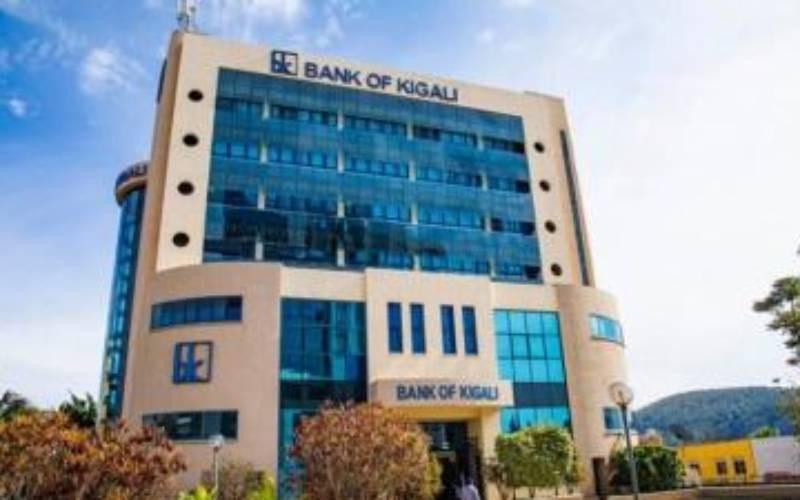NAIROBI: Kenya has about 10 deposit-taking microfinance institutions (DTMs), and hundreds of credit-only microfinance institutions (MFIs). Though some credit-only MFIs are members of the Association of Microfinance Institution (AMFI) as DTMs, they are not regulated by the Central Bank of Kenya (CBK).
This lack of proper regulatory mechanisms has seen the entry of crooks into the microfinance business. The result has been a tarnished reputation for the entire sector, a factor Peter Mugendi, the CEO of Remu Microfinance Bank, a deposit-taking institution, says helps explains why some MFIs are struggling to mobilise customer deposits.
In an interview with Business Beat, he also discusses why MFIs should stop being touted as the end-all solution to poverty.
Give us a brief history of Remu Microfinance Bank.
Remu Microfinance Bank was conceived by a team of entrepreneurs and professionals brought together by a common passion to establish a financial services company that would contribute to the country’s financial inclusion agenda. And in this way, take advantage of the expected economic growth and get a decent return on their investment. The bank, which is licensed by CBK, is keen on increasing penetration in the SME sector.
There have been allegations that MFIs do not actually help the poor break out of the poverty cycle, but instead push them deeper into it with high interest rates and aggressive selling tactics. Do you agree?
Microfinance is a business model designed as one of the interventions to alleviate poverty through expanding financial inclusion. It is, however, not THE solution to the poverty problem in the country. It can only work in collaboration with other interventions to achieve poverty alleviation.
Microfinance, by the nature of how it was introduced — that is, through NGOs and other socially oriented development institutions — was marketed as the solution to the poverty question, and this was wrong.
So, to the majority of people, there is a frustration that this has not been achieved, and not just here in Kenya, but across the world, including Bangladesh.
Having said that, I understand the proponents of this view because of the entry of all manner of informal money lenders who position themselves as microfinance institutions, while in actual sense, they are shylocks.
They charge obscene interest rates, and use crude methods to recover their money. They do not care about good business practices, over-indebtedness or financial literacy. Because of these bad practices and terrible experiences, there is a view that MFIs have pushed the poor further into poverty.
But for formal MF businesses, I can assure you they are making a significant contribution towards poverty alleviation — the success stories are numerous. They focus on the double bottom line of financial and social returns.
Will MFIs survive the onslaught from banks, which have also started providing microfinance products?
The future of microfinance is very bright. Commercial banks will, as is their nature, continue to innovate. Our sector will do the same to remain relevant to our chosen clientele. These changes are beneficial to Kenyans and will improve financial access, which makes the future very exciting.
What are some of the challenges you have had to deal with while running Remu, and are they unique to your DTM or the whole microfinance sector?
Stay informed. Subscribe to our newsletter
Our challenges affect the entire industry, and one of the big ones is deposit mobilisation. MFIs tend to find it difficult to convince our customers to deposit money with us. Customers would rather borrow from us but deposit in commercial banks.
The other challenge, which is somewhat related to deposit mobilisation, is high interest rates, which are leading to a high number of non-performing loans. There is also fierce competition in the sector.
What is your target group and what have been your achievements so far?
We are targeting growth-oriented SMEs. These are the enterprises driving growth in the economy, yet they fall in the ‘missing middle’ in as far as access to capital is concerned.
The bank has grown over the past four years to four branches. We broke even in 2014 and are keen on building on that success. We have been able to leverage on technology, including mobile money platforms, to offer convenient services to our customers.
Some of our products include a rent-to-own partnership with vehicle-leasing firm Vaell, and agribusiness value chain financing in partnership with agricultural marketing company, Farm Concern International.
[email protected]
 The Standard Group Plc is a
multi-media organization with investments in media platforms spanning newspaper
print operations, television, radio broadcasting, digital and online services. The
Standard Group is recognized as a leading multi-media house in Kenya with a key
influence in matters of national and international interest.
The Standard Group Plc is a
multi-media organization with investments in media platforms spanning newspaper
print operations, television, radio broadcasting, digital and online services. The
Standard Group is recognized as a leading multi-media house in Kenya with a key
influence in matters of national and international interest.
 The Standard Group Plc is a
multi-media organization with investments in media platforms spanning newspaper
print operations, television, radio broadcasting, digital and online services. The
Standard Group is recognized as a leading multi-media house in Kenya with a key
influence in matters of national and international interest.
The Standard Group Plc is a
multi-media organization with investments in media platforms spanning newspaper
print operations, television, radio broadcasting, digital and online services. The
Standard Group is recognized as a leading multi-media house in Kenya with a key
influence in matters of national and international interest.








